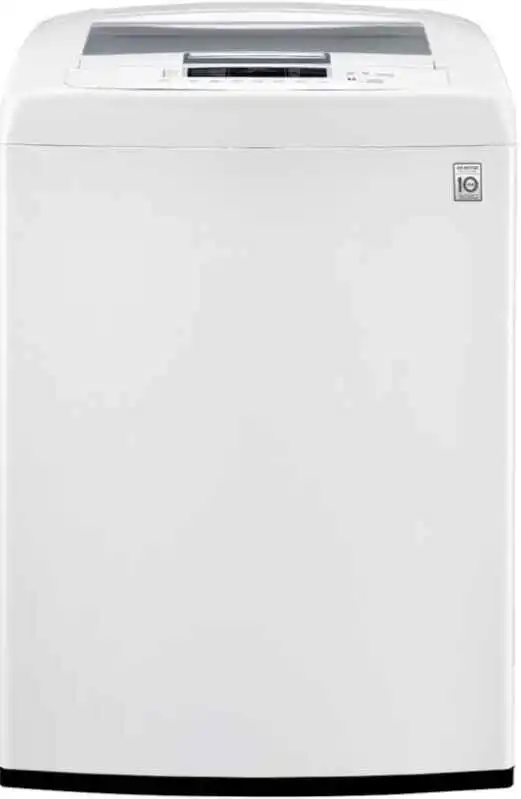LG WT1101CW Washer Owner’s Manual and Troubleshooting
The LG WT1101CW washer is designed with advanced top-load technology, combining energy efficiency with user-friendly features to simplify laundry tasks. The official owner’s manual provides detailed guidance on proper installation, optimal usage settings, fabric care recommendations, and routine maintenance procedures.
Understanding each function—such as cycle selection, water level control, and smart diagnosis—ensures longer appliance lifespan and consistent performance. Safety instructions, troubleshooting basics, and warranty details are also included, offering a comprehensive reference for new and experienced users alike.
Accessing the manual before first use helps avoid operational errors and enhances overall washing results.
Owner’s Manual
This model falls under the category of washing machines. You’re free to download the User Manual PDF without any cost. This manual is available in the following language ENGLISH and ESPAÑOL.
Do you have any questions regarding this model (WT1101CW)? Go directly to the support option in the header. I will provide the information within 5 hours.
LG WT1101CW Appliance Troubleshooting
The LG model incorporates a self-diagnostic system designed to identify malfunctions before they escalate. While this technology adds convenience, consistent performance relies on a clear understanding of the most common functional interruptions. Troubleshooting this model involves assessing load balance, water flow efficiency, and component reliability. Timely intervention not only prevents major repairs but also maintains long-term appliance health.
Quick Fix Checklist (Before You Call a Technician)
Common Issues
Operational disruptions in the LG WT1101CW typically stem from improper load distribution, restricted water flow, or user setup errors. For instance, slow drainage often results from a kinked or obstructed hose, while a non-starting washer may be traced to a tripped circuit or loose power connection.
Inconsistent water fill cycles frequently occur due to Blocked water inlet screens, partially closed water valves, or insufficient household water pressure. These are not faults in the machine’s engineering but conditions arising from external factors or improper use.
Vibration and noise complaints, such as thumping or rattling, usually indicate unbalanced loads or foreign objects lodged inside the drum. Rebalancing the load or inspecting for coins and debris resolves most of these concerns.
Leaks around the unit often signal over-sudsing, improper hose connections, or large items like comforters disrupting the tub seal during spin cycles.
Excessive sudsing, prolonged cycle times, or insufficient water fill may also relate to incorrect detergent use. Since the model is a high-efficiency washer, it requires low-sudsing HE detergent. Misuse can impair rinse quality and reduce washing effectiveness.
Error Codes
The washing machine communicates issues via digital error codes, enabling precise and timely diagnosis. Each code reflects a specific malfunction:
- dE/lid errors: Indicate improper lid closure or a fault in the lid lock mechanism. The unit will not proceed until the lid is secured and locked.
- IE (inlet error): Points to inadequate water supply, commonly caused by closed taps, kinked hoses, or clogged inlet filters.
- OE (drain error): Suggests a blocked or elevated drain hose, hindering water ejection.
- UE / uE (unbalance errors): Signal an out-of-balance load; the washer attempts auto-correction but may pause for manual redistribution.
- CL (child lock): A control lock feature—often mistaken for an error—activated by holding certain buttons.
- LE (motor overload): Usually due to overloading or mechanical resistance; allowing the motor to cool before restarting often resolves it.
- FE (overflow error): Typically linked to a faulty inlet valve causing overfill—requires shutting water supply and calling for service.
- PE / TE / E6 / AE: These represent sensor or electrical faults (thermistor, water level, clutch, etc.) and should be addressed by a qualified technician.
Decoding these messages correctly minimizes downtime and avoids unnecessary service calls.
When to Contact Support
Although many problems can be resolved through routine checks, certain conditions necessitate professional attention. Consistent error codes, unresponsive controls, repeated unbalance warnings despite proper load management, or signs of water damage within the control panel suggest internal faults.
Similarly, sensor errors such as PE, TE, or LE typically involve electrical diagnostics beyond standard homeowner capacity.
If the drum does not spin even with a secure lid, or if water continues to fill beyond safe levels, immediate service is recommended. Ignoring such signals can damage internal circuitry or the motor. For optimal performance and safety, always consult an LG-certified technician for persistent electrical, mechanical, or software issues.

General:
Brand | LG |
Model | WT1101CW |
Product | Washing Machine |
Languages | ENGLISH and ESPAÑOL |
FileType | Owner’s Manual (PDF) |
FileSize | 3.07MB – (84 – Pages) |
